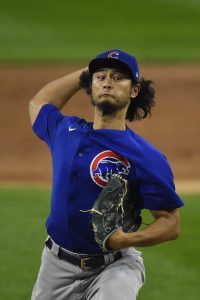Cubs president of baseball operations Jed Hoyer spoke with reporters on a Zoom call this morning, discussing a slew of topics in the wake of yesterday’s trade of Yu Darvish and Victor Caratini to the Padres. Notably, Hoyer claimed early in the process that the financial component of the trade was not the primary focus (Twitter link via Patrick Mooney of The Athletic):
We always have an eye on the finances of every deal. In 2020, obviously, some of those things are magnified. But that was not the focus. The focus of this deal was to try to move a player in the second half of his contract and acquire a lot of young talent.
It’s tough to sell that finances weren’t the focus of the deal, given that the Cubs cleared more than $50MM in salary (over the next three years) and didn’t receive any of the Padres’ top 10 farmhands. Three of the four minor leaguers acquired in the trade have yet to play their first professional game, thanks to the lack of a minor league season in 2020.
Nevertheless, Hoyer expressed confidence that the Cubs will have a competitive roster in 2021, although he simultaneously indicated that the organization won’t be a major player in free agency despite the money saved from the Darvish trade (Twitter links via Gordon Wittenmyer of NBC Sports and Paul Sullivan of the Chicago Tribune).’
Hoyer also called a report suggesting that the Cubs were shopping Willson Contreras “fictional,” though he acknowledged he has received trade interest in his catcher and would not label him untouchable. ESPN’s Jesse Rogers tweets that in spite of Hoyer’s denial, the Cubs have indeed discussed Contreras with other clubs “a lot” in the “recent past.” The Athletic’s Sahadev Sharma added that the denial does not mean Contreras won’t be moved, though there haven’t been “substantive” talks in the past week or two.
The messaging throughout the call seems rather mixed. Hoyer has asserted that finances did not drive the trade, which most in the industry view as a salary dump. Free agency, meanwhile, will become a priority again only when the roster “has the bones” of a contender, which inherently implies that the current roster has something less than that (due, in no small part, to the Darvish trade itself). Yet the company line is that this team will compete in 2021, and the very notion of shopping Contreras was framed as ridiculous.
Also puzzling was Hoyer’s characterization of the Darvish return. While it’s standard to see an executive express excitement over the young talent acquired in exchange for a star player, as he did today, the newly minted Cubs president also suggested that this was the best package he could coax from the Padres (Twitter link via Rogers). Hoyer noted that San Diego counterpart A.J. Preller has steadfastly held onto MacKenzie Gore and most of his organization’s best prospects throughout a frenzy of trade activity dating back to August.
However, the very mention of taking the best return out there seems to imply that there was indeed pressure from ownership to make a deal. Taking the best deal available is only the course of action charted when taking no deal at all isn’t an option. Beyond that, if finances truly weren’t the main focus, one would assume the prospect return have been heightened by the Cubs offering to pay down more than the reported $3MM they’re sending to the Padres to cover Darvish’s remaining $62MM in guarantees.
It’s an unenviable spot for Hoyer or any executive to have to talk around a trade of this nature, but this morning’s press conference still felt more disconnected than it needed to be. At the end of the day, the Cubs’ message is that trade was not intended as a salary dump; that the team will still be competitive in 2021 without any notable free-agent additions to a roster that may not have the “bones” of a contender (and also just lost a Cy Young runner-up); and that initiating additional trades of established players (e.g. Contreras) is far-fetched.
The goal may have been to push back on the notion of a full-scale teardown, but the resulting depiction is something of a rudderless ship. Does this team view itself as a contender for 2021? If so — and if not for financial reasons — why trade its best pitcher while eschewing free-agent additions with the associated cost savings? If not, then why push back so strongly on trading Contreras?
The good news for the Cubs and their fans is that no one else in the National League Central seems to want to try to separate themselves from the pack. Given the inactivity throughout the division, the Cubs could still find themselves among the Central’s more competitive teams by default. Still, whether it happens this winter or next offseason — when each of Anthony Rizzo, Javier Baez and Kris Bryant are slated to reach free agency — it’s clear that substantial change is on the horizon for the Cubs.

